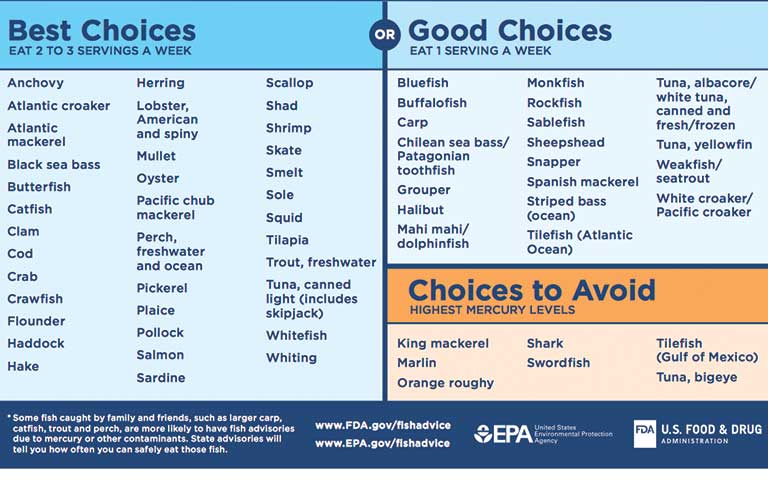Where mercury comes from
Mercury is produced primarily through industrial pollution, volcanic activity, and rivers, streams, and oceans. Algae consumes a lot of mercury present in seawater; then fish eat that algae and mercury accumulates in their body. Generally, the larger and older the fish, the higher the mercury content. The issue is that fish is also a rich source of Omega-3 fatty acids.
The fish dilemma
Fish is rich in Omega-3’s
Omega-3 fatty acids are essential nutrients for developing babies. American research found that babies (12 months old) with high levels of DHA performed better in visual, memory, and mental tests. Omega-3’s are important for pregnant mothers and fetal development (as DHA levels rise during pregnancy). Fish supplementation during pregnancy also resulted in higher mental scores (at age 3), sleep efficiency, and reduced learning/behavioral difficulties.
Fish can also contain high levels of mercury
Fish is a rich nutrient source but can also contain harmful amounts of mercury. High doses of mercury can harm the nervous system and impair cognition, memory, and attention. Researchers found that children with high concentrations of mercury performed below average in cognitive, memory, and verbal tests.
Maintaining a balanced diet
How much fish is too much?
In this case, the type of fish (including shellfish) matters more than the absolute amount. Compare salmon and bluefin tuna, for example. Both are rich sources of Omega-3’s but have drastically different mercury content. Salmon contains 0.01 – 0.08 ppm of mercury while bluefin tuna can contain anywhere from 0.06 – 3.03 ppm!
How much mercury is too much?
According to the Environmental Protection Agency: avoid fish that contains more than 0.5ppm or 5 micrograms per gram of mercury. For children, keep mercury consumption under 0.1 micrograms per kilo of bodyweight per day. These recommendations include a tenfold safety margin (don’t worry!)
Bottom line
Don’t be afraid to cook your children fish! Just make sure you’re sticking to the FDA’s recommended 2 – 3 servings a week while avoiding fish high in mercury.
Refer to guidelines below for fish with low mercury content
Sources
https://www.fda.gov/food/consumers/advice-about-eating-fish
https://parentingscience.com/mercury-in-fish/
https://www.healthline.com/nutrition/mercury-content-of-fish#bottom-line

